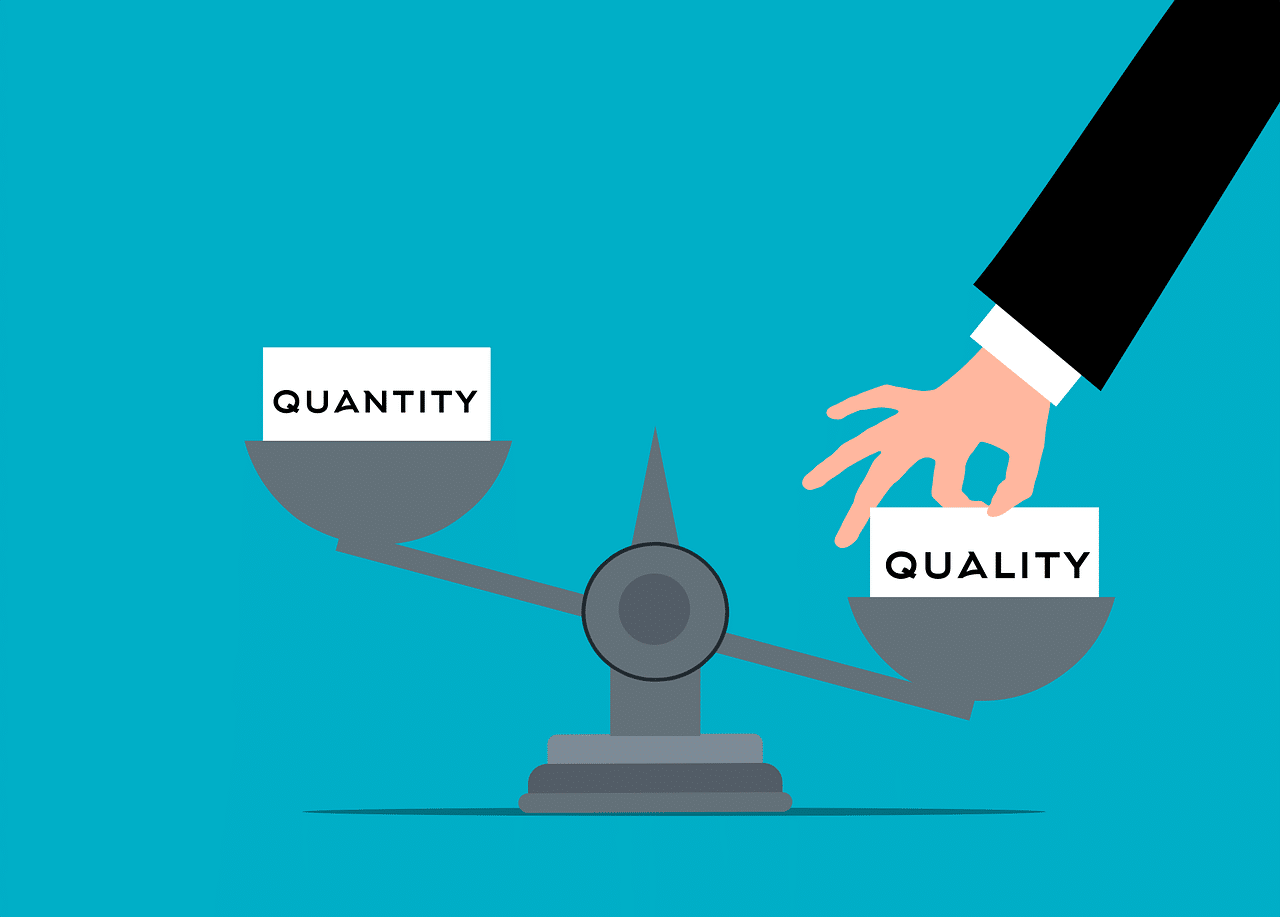How Content Quantity Impacts Your Marketing Strategy
When you sit down and think about it, each post you make is a chance to show up closer to the top of the search engine results page (SERP).
As a general rule, this can result in a larger amount of traffic coming to your website or blog from organic search.
While this is indeed a good thing, there is always a risk of Google search bots identifying the content as subpar due to you focusing only on the quantity rather than the quality of the content.
Then there is the fact that the more you post, the higher number of new leads you are likely to acquire.
Plus, the more content that you have developed and can post, the more content you have to email, post to social media, and simply market.
Google says that it takes about 18 times for an individual to touch base with a brand before becoming a true customer.
Therefore, the more content that you produce and put in front of prospective customers, the more aware they become of your brand and the more likely they are to convert.

Keep in mind you don’t want to overload your audience with a lot of content, but at the same time, you don’t want to post too little.
Posting too much could be seen as spammy, and it could tie you up and keep you from performing other important business-related tasks.
By posting one blog a month that may or may not be of high enough quality for your readers, you aren’t building your blog up much.
Google is also unlikely to recommend it, even if the content is high quality.
How Content Quality Impacts Your Marketing Strategy
When you produce top-notch content, your audience wants to read it.
They want to come back to read more of what you have to offer them. This is particularly true if the topic is particularly helpful.
Further, quality content will help increase the chances of being picked up by Google’s algorithm in a positive light, leading to a much higher ranking in the SERPs.
Of course, if you focus on quality over quantity, then you are going to have fewer opportunities for lead generation because there will be a reduced chance of the content getting in front of your audience, especially on a regular basis.
The same is true for marketing/promotion. The less content you have, the less you can promote it.
However, you must also think about the fact that you need quality content for people to read it. You can have as much content in the world to be consumed, but if it doesn’t read well or prove to be valuable to your audience, it won’t be read.
It is important to keep in mind that there are certain minimum requirements that need to be met as you are creating your content. Otherwise, Google will not pick up your content.
Ideally, you will want to get your posts up to around 1500-2000 words. This word count threshold allows you plenty of words to get the full point across of your content without going way overboard.
When developing quality content, you must also ensure it has proper flow. This means starting with an introduction that focuses on a question to hook the audience, a body that strives to answer that question, and a conclusion wrapping things up.
Further, any content you develop must be unique and provide value to readers, or else it is deemed low-quality.
Try to add images, videos, and hyperlinks whenever possible to further enhance the quality of the content.
Google will take all of these elements into consideration when deciding whether your content should appear towards the top of the SERPs.
Quality vs Quantity: Which Is Better?
Ultimately, neither is better than the other, and different methods will work better for different businesses.
However, they are both necessary to ensure your marketing campaign succeeds.
Quantity has the potential to increase brand awareness, while quality is important for conversions.
While there is no clear-cut winner when it comes to quality and quantity, the truth of the matter is that high-quality content is often preferred.
It would be great to produce content at high volumes, but it can be difficult to do so in order to maintain a certain level of content quality.
Further, when you are trying to grow your business, you need to attract people who are interested in what you have to offer. Otherwise, high amounts of traffic don’t account for much.
It is much easier to attract the right audience when you create high-quality content as opposed to low-quality, high-volume content.
There are benefits to both quality and quantity, but if you really want to get ahead of the game, you need to create a balance of both within your marketing campaign.
The Best Ways to Balance Quality and Quantity
When it comes to finding the balance between quality and quantity, you simply need to ensure you are producing enough content to keep your audience engaged while also ensuring the content produced is of value to your audience.
Here are a few tips as you move forward and try to create the perfect balance between quantity and quality.
1. Schedule Your Content
One thing you should do to maintain the proper balance between the two is schedule your posts.
You need to know what content is being published, when it’s being published, and where it’s being published.
While the content you are posting does indeed need to be of good quality, you don’t want to have any significant gaps in your posting schedule.
This is because a lack of frequent and consistent posting will lead to the loss of important readers.

So, as you begin to create a content posting schedule, you want to create a frequency schedule that aligns with your content production schedule while also ensuring that you are posting more than once or twice a week.
This allows you to better engage with your readers. Plus, you are likely to increase the number of readers and followers you have with a more frequent posting schedule.
Don’t forget to also post to your social media platforms. Just try to ensure that your content, dates, and times don’t clash with one another.
2. Break Up Content into Multiple Posts
While a long-form post can be beneficial when it provides the right content and is of high quality, the truth is that readers don’t have time to sit down and read an extremely long post in one sitting.
Therefore, when you create a long piece (which is sometimes necessary to get all of the information out there to your readers about a certain topic), consider breaking it up into smaller sections/posts.
Alternatively, you can just set out to create a piece of content that will be delivered as a series.
In doing so, the content will be easier for your audience to read, and you can better manage both the quality of the content and the quantity of the content.
Further, when you post a series, your audience will keep coming back to read the next installments.
3. Utilize Analytics
Analytics can prove to be incredibly beneficial as you are trying to figure out what it is your audience wants and needs from you as a brand in the form of content.
These analytics will identify what content marketing approach is working for you and which one isn’t.












Replies to This Discussion